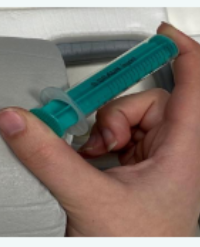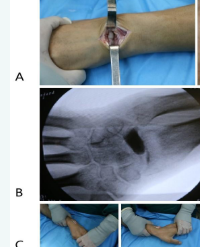
Static-Stress MRI for Evaluation of Complex Pulley-Lesions of the Finger in Sports Climber
Problem: Pulley-lesions of the fingers are typical injuries in climbing sports. In general, a rupture of the A2-pulley is found, without significant medical impact. Complex pulley-lesions may be devastating for a high-level career in sports climbing. Standard MRI in stretched finger position is not able to evaluate the A3- pulley, which is crucial for graduation of complex pulley lesions. Methods: We introduce stress MRI in a flexed finger position. This allows quantification of the distance between the palmar plate and the deep flexor tendon (A3-distance). Results: According to our data following MRI-examinations of 24 high-level sports climbers an A3-distance of 4 mm or more indicates rupture. An A3- distance up to 1 mm seems to be normal in high-level sports climber. However, due to the small sample number we did not find a clear cut-off point between strain and rupture. Discussion: The rather small and elastic A3-pulley defines the complexity of pulley-lesions. Conservative treatment is preferable if there is still continuity of the A3-pulley. Beside diagnostic imaging, Stress MRI of the fingers give some functional information about an inured A3-pulley in addition. Conclusion: Stress MRI of the fingers is an easy to perform tool for evaluation of the A3-pulley in every MRI-scanner available.
Frank Schellhammer¹ *, and Andreas Vantorre²

